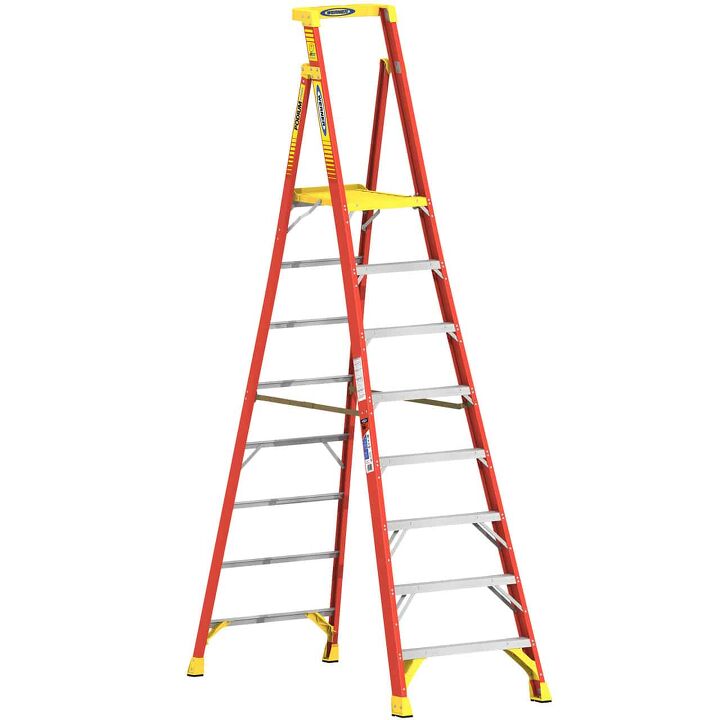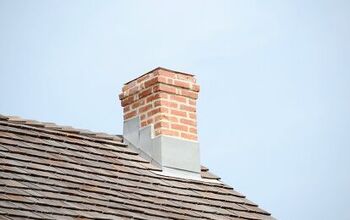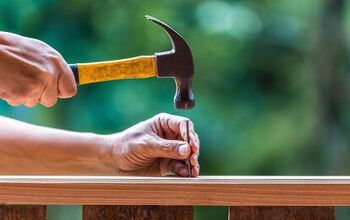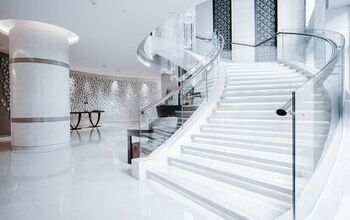What Are The Parts of a Ladder? (with Diagram)

Ladders are one of the most widely used tools around the house for home repair and maintenance. They are also very commonly utilized in professions and businesses for various purposes. Despite their popularity, many are unaware of the parts of a ladder and their functions.
Although there are many different types of ladders out there, the ladders that are most often used in the home are step ladders. Extension ladders are another common variety for outdoor tasks or anything that a step ladder may not be able to reach.
Each type of ladder has characteristics that they share and also some that they do not. The parts of a step ladder can be broken down into the cap, shelf, steps, rails, spreaders and shoes. Whereas, the parts of an extension ladder are categorized as the rails, rungs, base section, fly section, rung locks, rope and pulley, and stop.
While these two ladders may appear similar, they have components that are unique to their individual design.
Parts of a Step Ladder
Whether you own a small one for reaching upper kitchen cabinets, a medium-sized one for changing out lightbulbs, or a tall one for accessing much higher areas, most households have a step ladder. The different parts of a step ladder include:
- Cap
- Shelf
- Steps
- Rails
- Spreaders
- Shoes
Let’s explore each of these six individual components in detail to better understand their purpose and function in the operation of a step ladder.
1. Cap
The cap is the topmost portion of the ladder, primarily used to bind the step ladder together. Many modern ladders now come with caps that feature a tray-like component that can be used as a workspace for holding tools, screws, nails, and smaller items for easy access at the top of the ladder.
A ladder’s cap is usually not as strong as the steps and you should, therefore, never place your feet on it. It simply cannot bear the weight of your whole body.
2. Shelf
Shelves are generally found on step ladders that do not have a tray-like top cap. They are found near the top of the ladder, usually right before the cap, and provide a flat space for the operator to use as a small workstation. On the shelf, you can place paint, tools, or any other items that you are working with.
That way, you don’t have to keep descending the ladder to access the materials you need for your project. To maximize stability and prevent anything from falling off the ladder, the shelf locks in place.
3. Steps
The steps are the part of a ladder that most people are familiar with. They, more or less, speak for themselves. Steps are where you place your feet to ascend and descend the step ladder. The number of steps the ladder has will depend on its height, though the most common one is outfitted with five steps.
On step ladders, the steps that are positioned closer to the bottom are wider and they gradually become narrower at the top. Some ladder manufacturers supply the steps with an anti-slip tread to ensure traction and provide better grip. Additionally, some step ladders have steps that extend toward the rear side rail, to allow for a much longer tray.
4. Rails
The rails on a step ladder are the vertical segments that the steps are attached to. On a step ladder, you have four rails in total. There are two rails in the front, the left and right rails, and two in the back, referred to as the rear side rails.
The rear side rails are located on the side of the ladder that should not be climbed. These rails are responsible for allowing the ladder to stand upright without needing to lean on anything. The two front rails are generally much more extensive, as they are intended to support the majority of the weight.
5. Spreaders
The spreaders are the pieces of a step ladder that are locked into position when the rails are extended. They are metal bars that feature hinges, which attach the front rails to the rear rails. The hinges in the middle of the spreaders are what allow you to open and close a step ladder.
When the hinges are locked, this provides the stability needed to prevent the step ladder from splitting apart or falling inward when in use.
6. Shoes
The purpose of the shoes, or feet, of a step ladder is to prevent it from moving or slipping when you are standing on it. They come in many different materials and are mostly intended for safety. Regardless of the type of ladder you choose, you always want to make sure that the shoes are made of a good anti-slip material.
Parts of an Extension Ladder
In addition to a step ladder, many households have an extension ladder for outdoor use. These ladders allow you to perform tasks that are much higher such as repairing the roof, installing Christmas lights, or cleaning out the gutters.
Extension ladders have some alike parts to step ladders, including the rails, rungs (or steps), and anti-slip shoes. However, the rest of the components differ significantly. The basic parts of an extension ladder include:
- Rails
- Rungs
- Base Section
- Fly Section
- Rung Locks
- Rope and Pulley
- Stop
Let’s explore each of these seven components individually to obtain a better understanding of how extension ladders operate.
1. Rails
Like a step ladder, the rails on an extension ladder are the vertical components that the rungs are attached to. In most cases, rails are made of either fiberglass or aluminum. Extension ladders have four rails in total, two on the base section and two on the fly section.
2. Rungs
Rungs is the term used to describe the pieces of metal that you step on. In contrast, on step ladders they are simply called ‘steps.’ On extension ladders, rungs serve the same function as steps, with rungs being only half the depth. This allows for the fly section of the ladder to easily slide up and down when needed.
The rungs on an extension ladder serve two primary purposes: “steps” to stand on, and a means to hold onto as you ascend and descend the ladder. Standard extension ladders have rungs that are twelve inches apart.
3. Base Section
Extension ladders can be broken up into two main sections: the base section and the fly section. The base section is the part of an extension ladder that remains in place; it cannot move up or down. It is the part of the ladder that rests on the ground when in use. This component interlocks with the fly section of an extension ladder, allowing both pieces to function like a rail-type system.
4. Fly Section
The second of the two main sections to an extension ladder is the fly section. This is the part of the ladder that can be slid up or down, extending the height of the ladder to almost double. It allows you to easily increase the height to reach higher locations and is arguably the most useful component on an extension ladder.
5. Rung Locks
Sometimes referred to as ‘extension locks,’ rung locks are a useful safety feature on extension ladders. They allow you to lock the fly section in place so that it does not slide down while in use. When you’re ready to drop the fly section, all you need to do is hinge the rung locks upward and slide them over the base rungs.
All extension ladders come outfitted with locks to secure the ladder’s upper section at each phase as the operator changes the height of the ladder. When the fly section is raised, the rung locks are folded back. This allows you to move the rails freely to obtain the desired height. Once the intended height has been achieved, the locks fold back, are fastened over the lower rung, and the ladder is ready to use.
6. Rope and Pulley
An extension ladder’s rope and pulley system is another crucial part of the tool. It is what allows you to move the fly section up and down to obtain the desired height. To raise the fly section, simply pull on the rope and the pulley will lift it. Most extension ladders are between 20 and 40-foot-high, with the two main sections attached.
By lifting the fly section with the rope and pulley system, you can extend the height of the ladder in increments of roughly twelve inches. Handling the pulley system on either side of the ladder allows you to easily extend it partially or completely, depending on your particular needs.
7. Stop
The stop is a safety feature that is found near the top of the extension ladder’s base section. Its job is to prevent the fly section and the base section from being separated when the ladder is fully extended. If the extension ladder did not come equipped with a stop, the entire ladder would break apart into its two respective sections.
Wrapping It Up
As is evident above, both step ladders and extension ladders have many components in common and function in a relatively similar way. Though, depending on the type of ladder you have, there are still quite a few differences. Because of this, it can be very beneficial to know all the different parts of a ladder and their purpose in the operation of this incredibly helpful tool.

Jessica considers herself a home improvement and design enthusiast. She grew up surrounded by constant home improvement projects and owes most of what she knows to helping her dad renovate her childhood home. Being a Los Angeles resident, Jessica spends a lot of her time looking for her next DIY project and sharing her love for home design.
More by Jessica Stone





























